Discover top guides, trends, tips and expertise from AIO Writers
Successful Content Marketing Campaigns to Inspire You
Julia McCoy
Thursday, 15th Feb 2024
Imagine launching a content marketing campaign so magnetic that it pulls readers in like bees to honey. That’s the dream, right? But here’s the reality: running successful content marketing campaigns is no walk in the park. You need more than just good writing skills — you need strategy, creativity, and an understanding of what makes your audience tick.
In this piece, we dive deep into what makes content marketing campaigns successful. Plus, we’ll share strategies for creating engaging content across various formats — be it blogs or videos — and show you how to measure their impact effectively.
And because seeing is believing, we’ve got examples of winning campaigns from different industries to inspire you. So let’s get started on making sure your next campaign not only reaches but resonates with your audience.
Table Of Contents:
- What is a Content Marketing Campaign?
- Key Elements of Successful Content Marketing Campaigns
- Examples of Successful Content Marketing Campaigns
- Trends Shaping Future Content Marketing Campaigns
- Conclusion
What is a Content Marketing Campaign?
A content marketing campaign is a strategic approach to getting the right kind of attention to your brand.
You start by figuring out exactly who you’re trying to reach and what makes them tick. Then, you whip up some awesome content — think blog posts that answer real questions they have, videos that entertain while informing, infographics that break down complex ideas into digestible visuals, or even emails that feel like catching up with an old friend.
The goal? To be so helpful and interesting that folks not only stick around but also come back for more — and maybe even bring their friends along next time!
Whether it’s boosting brand awareness online, generating leads without being pushy, educating people on something new you’re offering, or simply engaging with your community in meaningful ways, every piece of content should fit together perfectly like a jigsaw puzzle.
And sure — it takes a bit of planning and a lot of patience — but keep sending tailored messages to your customers and soon enough you’ll see why this approach can really pay off compared to traditional ‘buy now’ ads.
Key Elements of Successful Content Marketing Campaigns
Every content marketing campaign must have clear objectives, a target audience, compelling content, a well-thought-out distribution strategy, and performance analysis.
Let’s break down the key elements of a successful content marketing campaign.
Clear Objectives
Setting clear objectives is like setting a destination for your campaign. Whether it’s boosting brand awareness, driving sales, or increasing customer engagement, defining your goals provides a clear direction for your efforts.
Without clear objectives, it’s challenging to measure success or know if your campaign is on track. For example, if your goal is to increase website traffic, you might focus on creating content that is optimized for search engines or promoting your content through social media channels to drive clicks to your site.
Having well-defined objectives also helps align your team’s efforts and resources toward achieving a common purpose.
Target Audience
Knowing who’s on the other side of the screen is crucial for creating content that resonates with them. Take the time to research and identify who your audience is, what their interests and pain points are, and where they spend their time online. By knowing your audience’s demographics, behaviors, and preferences, you can tailor your content to address their specific needs and interests.
This personalized approach not only increases the relevance and effectiveness of your content but also strengthens the connection with your audience. For instance, if you’re targeting young professionals interested in personal finance, you might create content about budgeting tips, investing strategies, or career development advice to address their concerns and aspirations.
Compelling Content
Content is at the heart of any content marketing campaign. It’s essential to create content that is valuable, relevant, and engaging to your audience. Whether it’s blog posts, videos, podcasts, or social media updates, your content should provide solutions to your audience’s problems, answer their questions, or entertain them.
Compelling content captures attention, sparks interest, and encourages action. This could mean telling captivating stories, sharing insightful data, or providing practical tips and advice. The key is to create content that adds value to your audience’s lives and establishes your brand as a trusted source of information. By consistently delivering high-quality content, you can build credibility, foster relationships, and drive desired outcomes for your campaign.
Consistency
Consistency is essential for maintaining momentum and building trust with your audience. It’s about establishing a regular cadence of content creation and distribution to keep your audience engaged and coming back for more.
Whether you publish weekly blog posts, daily social media updates, or monthly newsletters, maintaining a consistent schedule helps you stay top-of-mind and reinforces your brand’s presence.
Consistency also signals reliability and professionalism to your audience, demonstrating that you’re committed to delivering value over the long term. By setting and sticking to a consistent publishing schedule, you can cultivate a loyal following and maximize the impact of your content marketing efforts.
Distribution Strategy
Once you’ve created compelling content, you need a solid distribution strategy to get it in front of your target audience. This involves identifying the most effective channels for reaching your audience.
Whether it’s your website, social media platforms, email newsletters, or partnerships with influencers or industry publications, choose the channels where your audience is most active and receptive.
Tailor your content format and messaging to fit each channel’s unique characteristics and audience preferences. By diversifying your distribution channels and optimizing your content for each platform, you can reach a wider audience and amplify the impact of your content marketing campaign.
SEO
Search engine optimization (SEO) is crucial for increasing the visibility and discoverability of your content online. By optimizing your content for relevant keywords, improving your website’s technical performance, and earning backlinks from reputable sources, you can improve your content’s rankings in search engine results pages (SERPs).
This makes it easier for your target audience to find your content when they’re searching for related topics or solutions. Incorporate keyword research, on-page optimization, and link-building strategies into your content creation process to enhance your content’s SEO performance — and eventually, attract more organic traffic to your website and expand your audience reach.
Measurement and Analysis
Measurement and analysis are crucial for evaluating the effectiveness of your content marketing campaigns and making data-driven decisions. Identify key performance indicators (KPIs) that align with your campaign objectives, such as website traffic, engagement metrics (likes, shares, comments), conversion rates, or e-commerce content marketing ROI.
Use web analytics tools like Google Analytics, social media analytics dashboards, or marketing automation platforms to track and monitor these metrics regularly. Analyze the data to gain insights into what’s working well and what areas need improvement.
For example, if you notice that a particular piece of content is driving a high volume of traffic but has a low conversion rate, you may need to optimize the content or the conversion process to improve results. By measuring the impact of your content marketing efforts and iterating based on performance data, you can continuously improve your campaign’s effectiveness and maximize its ROI.
Adaptability
The digital landscape is constantly evolving, so it’s essential to stay flexible and adapt to changes in your industry, audience preferences, or competitive landscape. Keep an eye on emerging trends, technological advancements, and shifts in consumer behavior that may affect your content marketing strategy.
Be willing to experiment with new content formats, distribution channels, or messaging tactics to stay relevant and engage your audience effectively. Don’t be afraid to tweak your strategy for e-commerce content marketing based on feedback, performance data, and market insights.
By embracing adaptability and agility, you can stay ahead of the curve and ensure that your content marketing campaign remains effective and impactful in the long run.
Now let’s look at some examples of content marketing at work.
Examples of Successful Content Marketing Campaigns
Diving right into the heart of successful content marketing, let’s look at some campaigns that knocked it out of the park.
Social Media Content Marketing
Social media stands as a powerful platform for engaging with audiences and driving brand awareness. Brands that master the art of storytelling and engagement in these spaces often see remarkable success in their campaigns.
Wendy’s and Oreo stand out as prime content marketing examples of creative social media marketing.
Engaging Audiences with Wit: The Wendy’s Twitter Saga
The Twitter account of Wendy’s is known for its sharp wit and humorous banter. This fast food chain has effectively used social media to craft a unique brand voice that not only entertains but also engages followers in real-time conversations.
By roasting competitors and playfully interacting with customers, Wendy’s demonstrates how brands can use humor to remain top-of-mind among consumers.
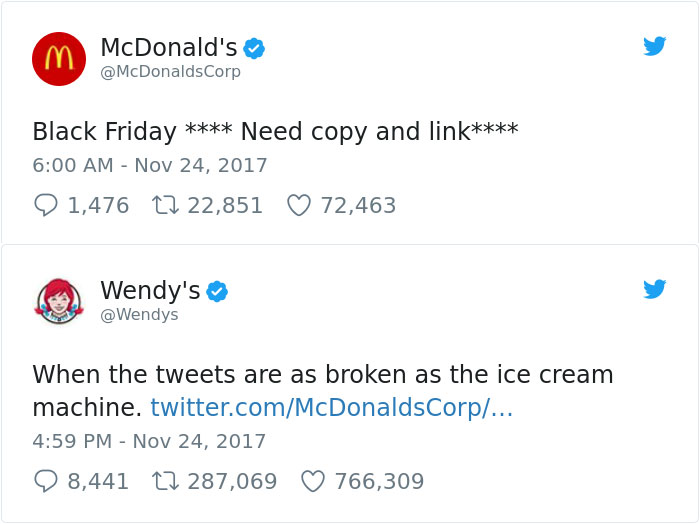
Oreo’s Creative Twist on Daily Events
Similarly, Oreo took content marketing by storm with its Daily Twist campaign. For 100 days, they captivated audiences by integrating Oreos into trending topics across social media. This clever approach not only showcased the brand’s creativity but also highlighted how companies can leverage current events to foster community engagement and enhance shareability online.
The campaign was so good that it even won a Clio award in 2013.
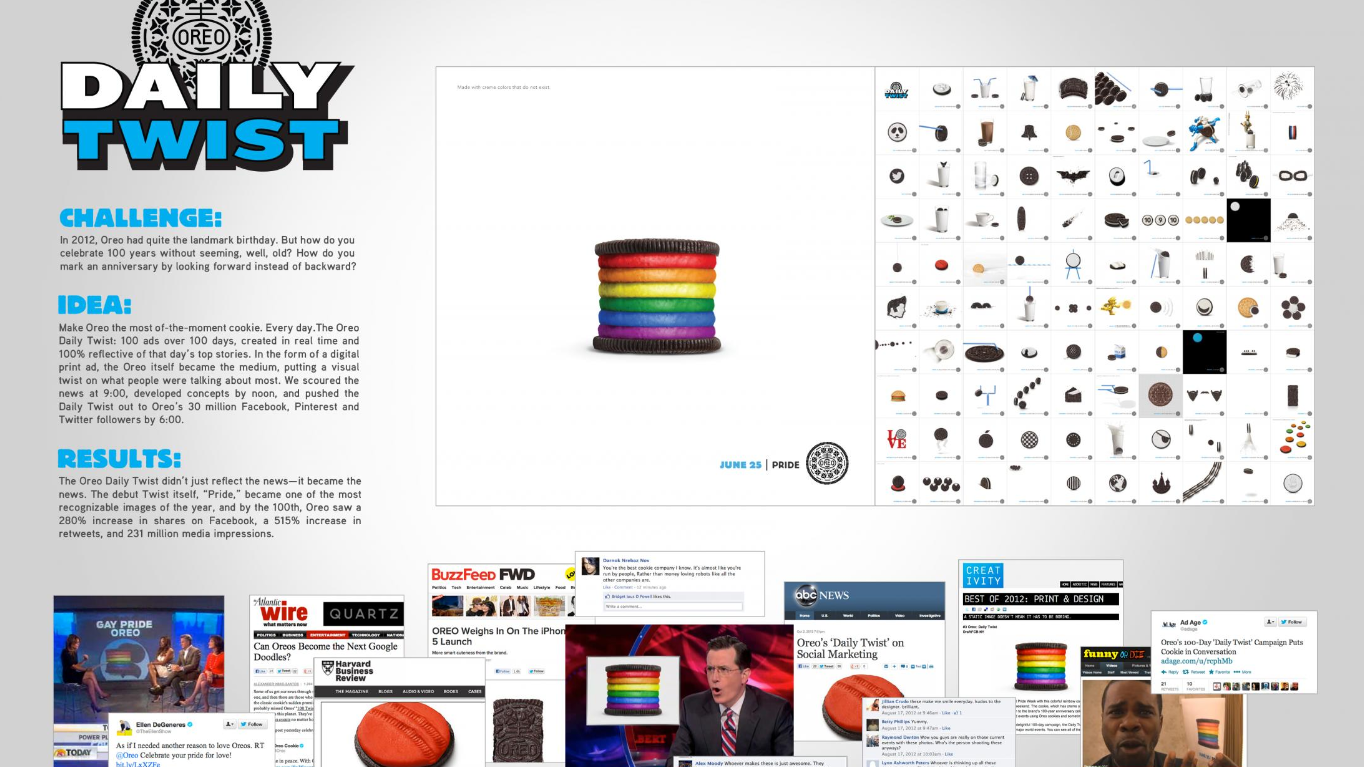
Key takeaways:
- Creativity: Both examples underscore the importance of creative thinking in content marketing strategies.
- Audience Engagement: Engaging directly with your audience fosters a sense of community around your brand.
- Hop on Trends: Incorporating current trends or popular culture references makes your content more relatable and engaging for users.
The successes achieved by Wendy’s witty interactions or Oreo’s innovative daily posts serve as compelling case studies for any business looking to elevate its presence on social media. They illustrate that when done right, engaging in platforms like Twitter or Instagram doesn’t just sell products — it builds lasting relationships with an ever-growing audience base eager for what you’ll post next.
Video Content Marketing
Video content marketing is hot right now and it’s showing no signs of slowing down. Consumers are increasingly turning to video content for information, entertainment, and education because videos are engaging, easy to consume, and often more memorable than text-based content.
Social media platforms like YouTube, Instagram, TikTok, and Facebook heavily prioritize video content in their algorithms. This means that video content often reaches a larger audience and generates more engagement than other types of content.
Let’s look at three content marketing examples of excellent video content marketing.
The GoPro Phenomenon
By harnessing the power of stories told by its users, GoPro transformed into a symbol of exploration and thrill. They encouraged users to share their own adrenaline-pumping videos taken with GoPro cameras. This approach not only showcased the product’s durability and quality but also built a community around shared experiences.
This strategy transformed customers into brand ambassadors, driving sales without traditional advertising.
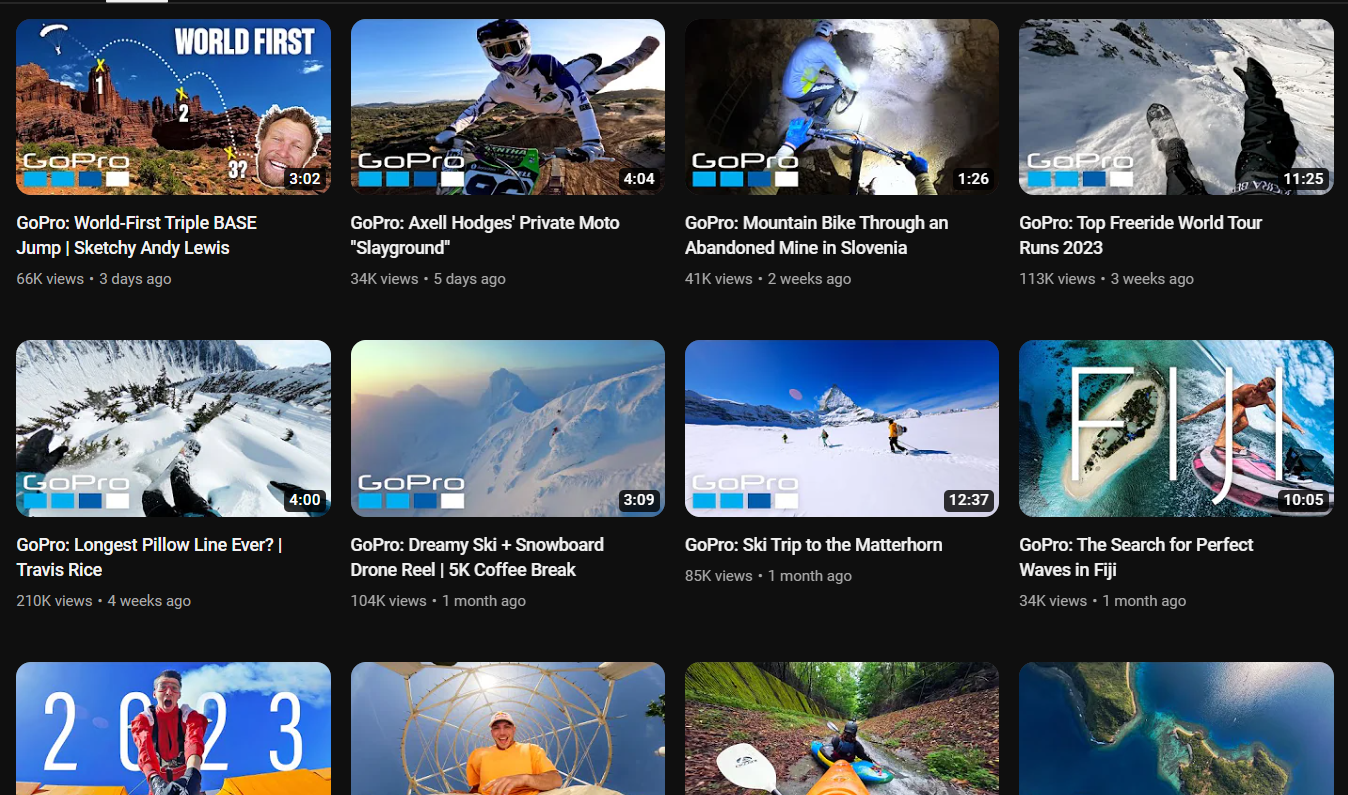
Airbnb’s “Live There” Campaign
Airbnb shifted focus from places to stay to living like a local with its “Live There” campaign. Airbnb showcased genuine tales from hosts, revealing unique dwellings and adventures across the globe, thus fulfilling the quest for authenticity.
This narrative-driven approach helped differentiate Airbnb in a crowded market, emphasizing personal connections over transactions.

Dove’s Real Beauty Sketches
Dove’s “Real Beauty Sketches” blitz on social media provocatively questioned the norms of beauty society holds dear. The compelling video series featured forensic artists drawing women as they see themselves versus how others see them.
This powerful message resonated globally; proving content that sparks conversation can dramatically increase brand visibility and impact.
This campaign also won a Clio in 2014.

Email Marketing
Successful content marketing campaigns are not just limited to ads. Email marketing still holds a pivotal role in fostering customer engagement and driving sales. Companies like Warby Parker and Airbnb have set benchmarks with their innovative email strategies, demonstrating how personalized and targeted communication can enhance the consumer experience.
Let’s look at why Warby Parker and Airbnb are perfect content marketing examples of a successful email campaign.
Warby Parker: A Masterclass in Email Engagement
Warby Parker has redefined the e-commerce landscape through its exceptional use of email marketing campaigns. By leveraging this channel, they’ve managed to not only boost their online presence but also solidify their brand identity.
Their strategy revolves around engaging customers with timely updates, product launches, and interactive content that encourages direct interaction. This approach ensures that consumers remain connected with the brand beyond just transactional exchanges.

Airbnb’s Personalized Travel Guides
In a similar vein, Airbnb utilizes email marketing to deliver value-added services directly to its users’ inboxes. Through meticulously crafted emails containing personalized travel guides based on previous searches and bookings, Airbnb enhances user experiences by offering relevant local insights and unique adventure suggestions.
This level of personalization not only fosters loyalty but also drives repeat business by making each communication feel tailor-made for the recipient.
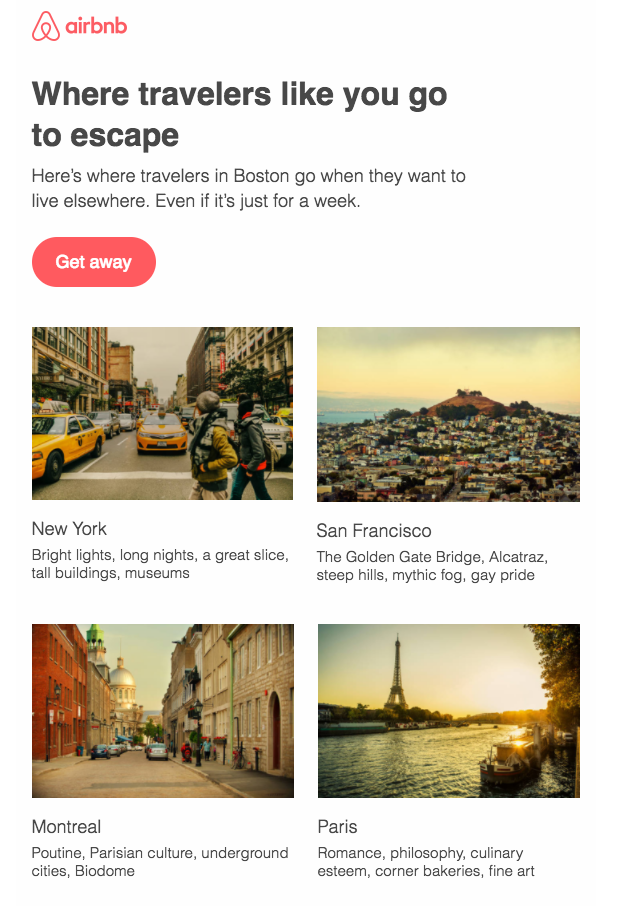
Key Takeaways:
- User-Centric Approach: Both companies exemplify how understanding your audience’s needs leads to more effective engagements.
- Creative Content Delivery: Leveraging emails as a platform for creative storytelling strengthens brand connections.
- Data-Driven Personalization: Utilizing consumer data to craft personalized messages increases relevance and response rates.
The success stories of Warby Parker and Airbnb underscore the importance of integrating creativity with technology in email marketing strategies. These examples serve as inspiration for businesses aiming to elevate their digital communications game by focusing on providing superior customer experiences.
B2B Content Marketing
Exploring successful B2B content marketing examples offers invaluable insights for marketers aiming to refine their strategies in the competitive digital landscape. Two standout content marketing examples, HubSpot and The B2B Marketing Podcast, illustrate how content can effectively position a brand as an industry thought leader while providing actionable value to its audience.
The B2B Marketing Podcast: Engaging Through Expert Insights
The power of podcasts in content marketing cannot be overstated, especially when it comes to engaging a professional audience with deep-dive discussions on industry trends and challenges.
The B2B Marketing Podcast excels by inviting experts across various sectors, offering listeners not only theoretical knowledge but practical takeaways that can be implemented immediately. This approach not only enriches the listener’s understanding but fosters a sense of trust and reliability towards the podcast creators.
Enhancing user experience by incorporating expert images could further personalize this connection, making each episode visually appealing and recognizable at first glance.
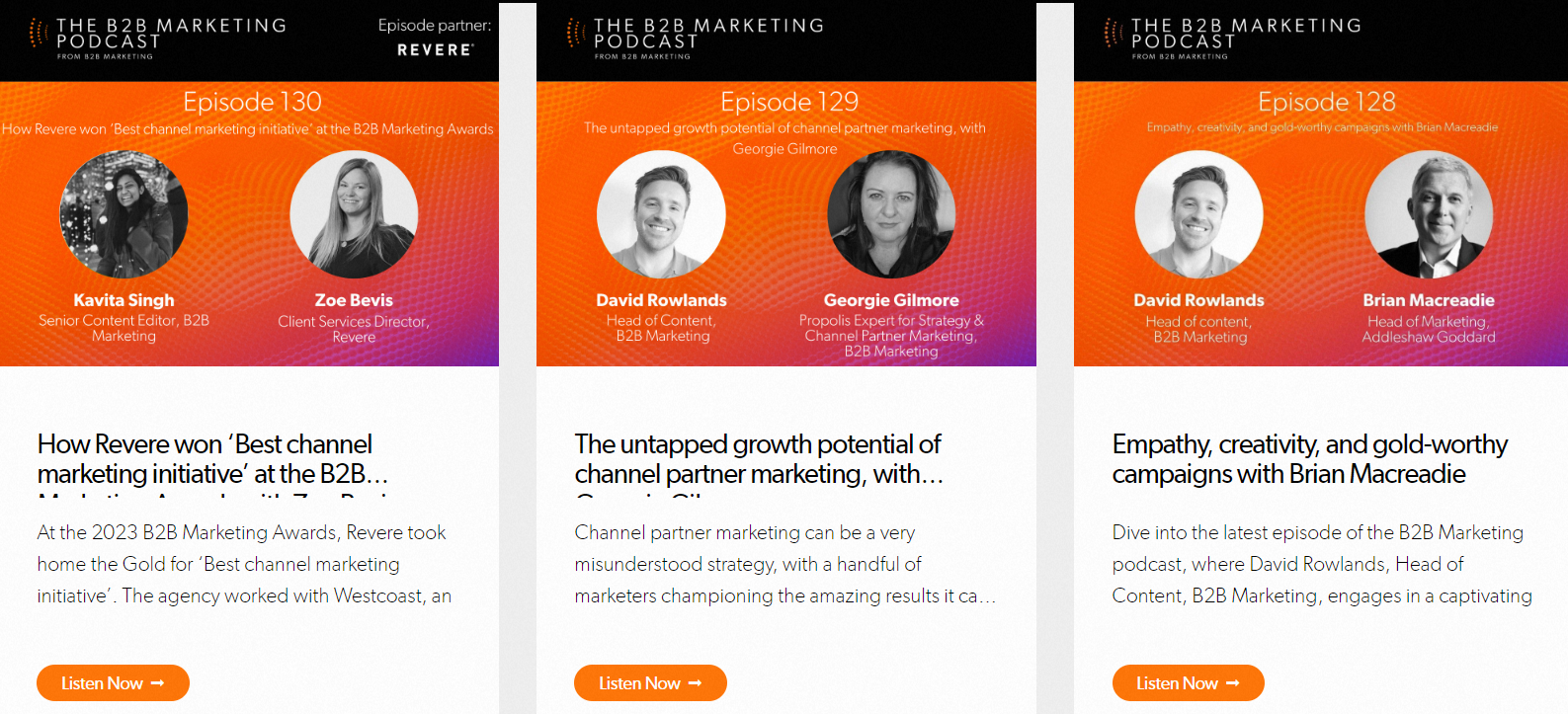
HubSpot’s Inbound Marketing Success
HubSpot mastered the art of inbound marketing by providing valuable resources like blogs, guides, templates, and tools for free. Their comprehensive resource library has become a go-to for marketers looking to learn new skills or brush up on trends. You’ll find an abundance of resources at HubSpot Resources.
This educational approach established HubSpot as an authority in digital marketing while subtly promoting its software solutions through practical application.

Focusing on delivering high-quality content tailored specifically toward its intended audience has enabled both these companies to not merely survive but thrive within their niches. By addressing real-world problems with actionable solutions while maintaining consistent engagement levels across platforms – whether auditory or textual – they set benchmarks for what effective B2B content marketing looks like.
These examples show us there is no one-size-fits-all solution in content marketing — success comes from knowing your audience deeply and crafting messages that resonate on a human level.
Trends Shaping Future Content Marketing Campaigns
The landscape of content marketing is always evolving, with new trends emerging that redefine how we connect with our audiences. Understanding these shifts is crucial for staying ahead.
AI-Driven Content Creation
Artificial Intelligence (AI) has moved from being a futuristic concept to playing an integral role in content creation. AI tools like BrandWell and Midjourney are now able to automatically generate written and visual pieces, drastically reducing the time it takes to produce content. Yet, the real intrigue lies not merely in its ability to speed up production but in amplifying customization efforts on a massive scale.
This shift towards AI-driven content means marketers need to become adept at blending human creativity with machine efficiency. For example, using AI for data analysis can help identify trending topics or audience preferences, which creators can then use as a foundation for their work.
Personalized Marketing
In the current digital era, it’s anticipated that brands will cater to each consumer’s unique desires and inclinations. Personalized marketing has therefore become a necessity for engaging effectively with your audience.
Leveraging data analytics allows marketers to craft messages that resonate personally with each consumer. From personalized email campaigns to tailored website experiences based on user behavior, every touchpoint is an opportunity for customization that feels authentic rather than generic.
Conclusion
The success of content marketing campaigns by brands like Dove, GoPro, Airbnb, Warby Parker, and HubSpot underscores the power of storytelling, authenticity, and audience-centricity in driving engagement and brand loyalty.
These campaigns demonstrate that by understanding their audience’s needs, values, and aspirations, brands can create compelling content that resonates deeply and fosters meaningful connections.
Whether it’s Dove’s groundbreaking “Real Beauty” campaign, GoPro’s adrenaline-pumping user-generated content, Airbnb’s emotionally resonant “Live There” series, Warby Parker’s innovative virtual try-on experience, or HubSpot’s comprehensive educational resources, each campaign showcases the transformative potential of content marketing when executed with creativity, empathy, and strategic intent.
As these brands continue to push the boundaries of content marketing innovation, they inspire you and many others to rethink your approach, embrace authenticity, and prioritize meaningful storytelling to forge lasting relationships with your audience in an ever-evolving digital landscape.
Ready to launch your next viral campaign? Write your ad copy with BrandWell!

UNLOCK YOUR POTENTIAL
Long Headline that highlights Value Proposition of Lead Magnet
Grab a front row seat to our video masterclasses, interviews, case studies, tutorials, and guides.



